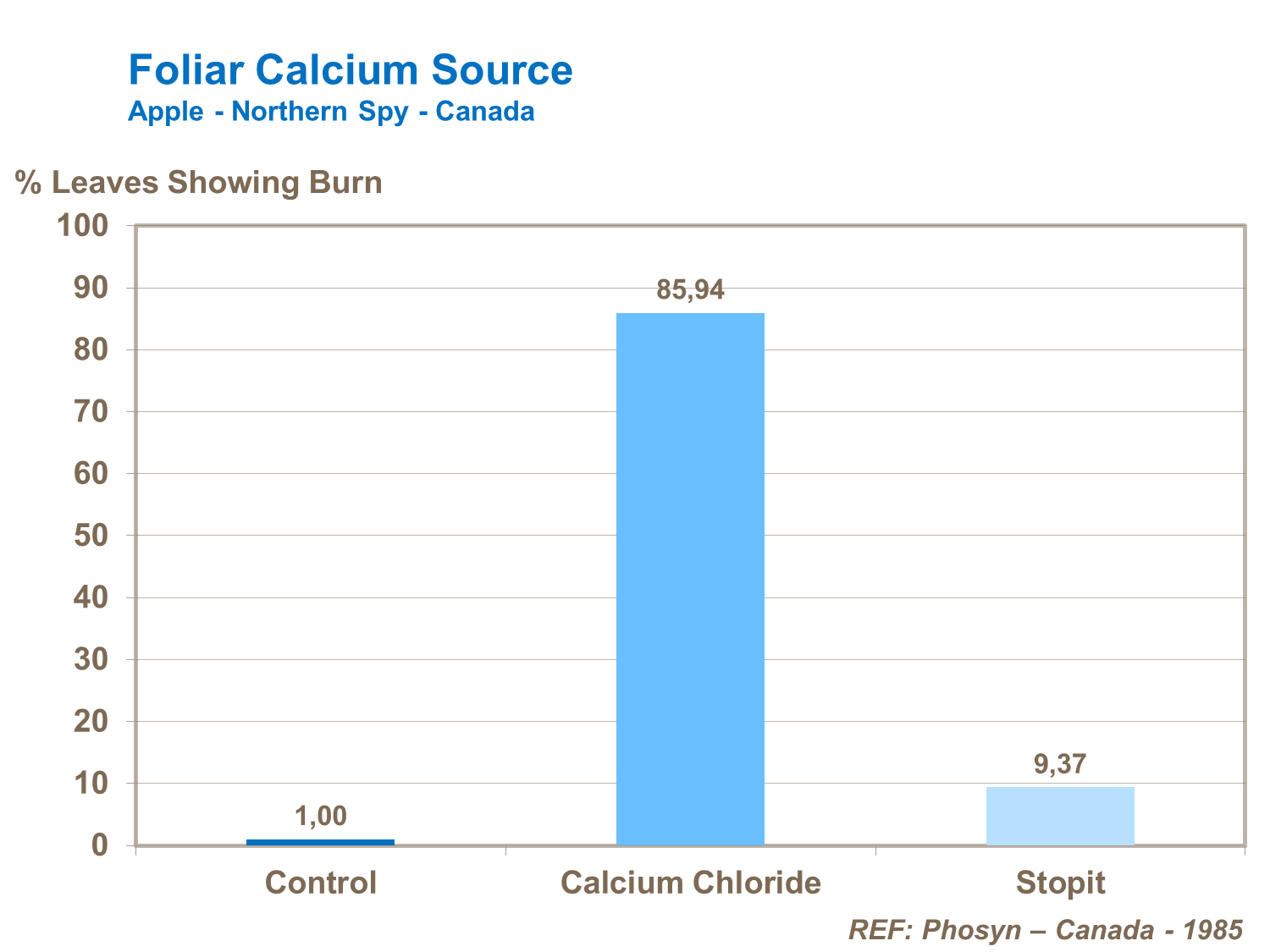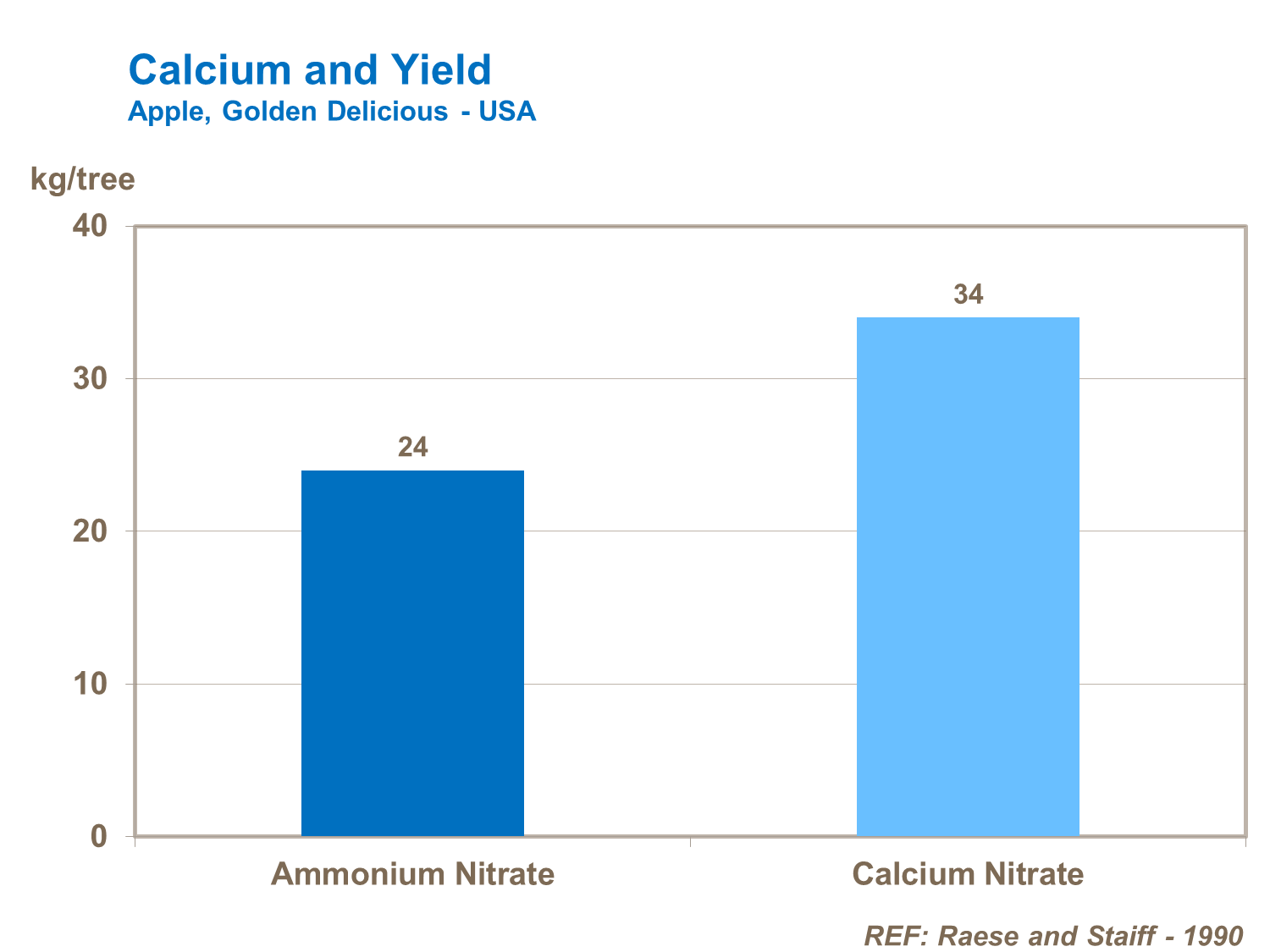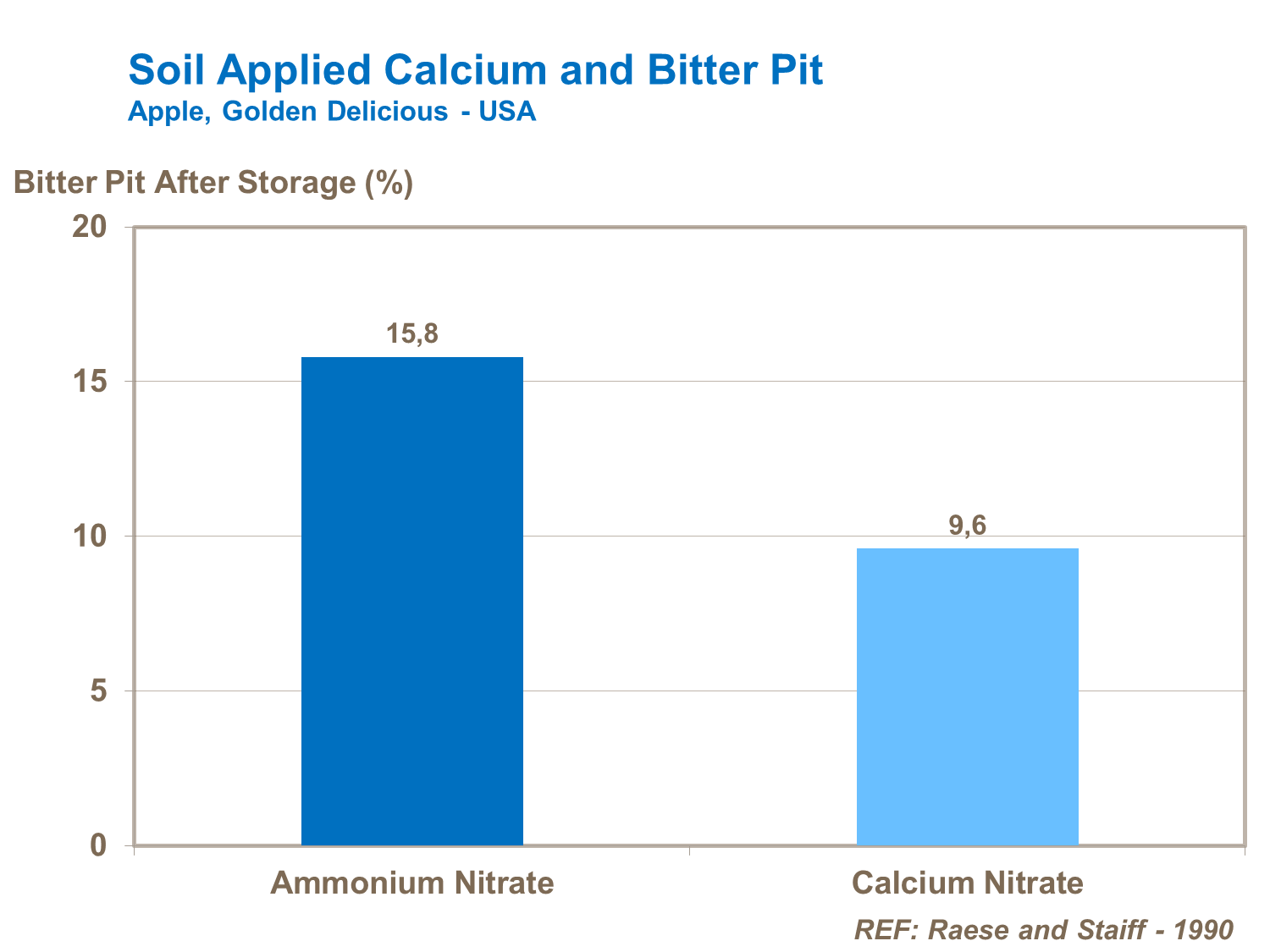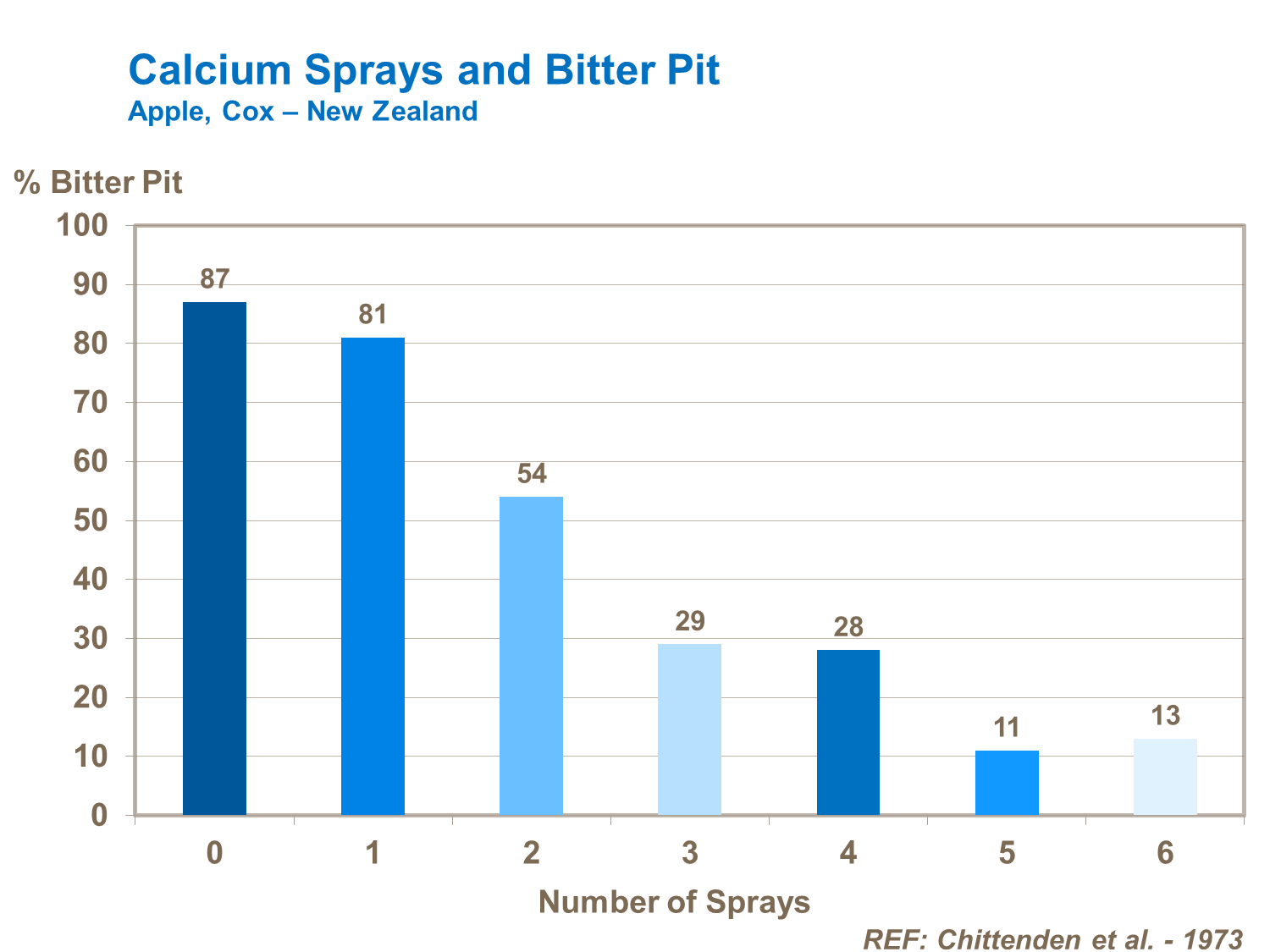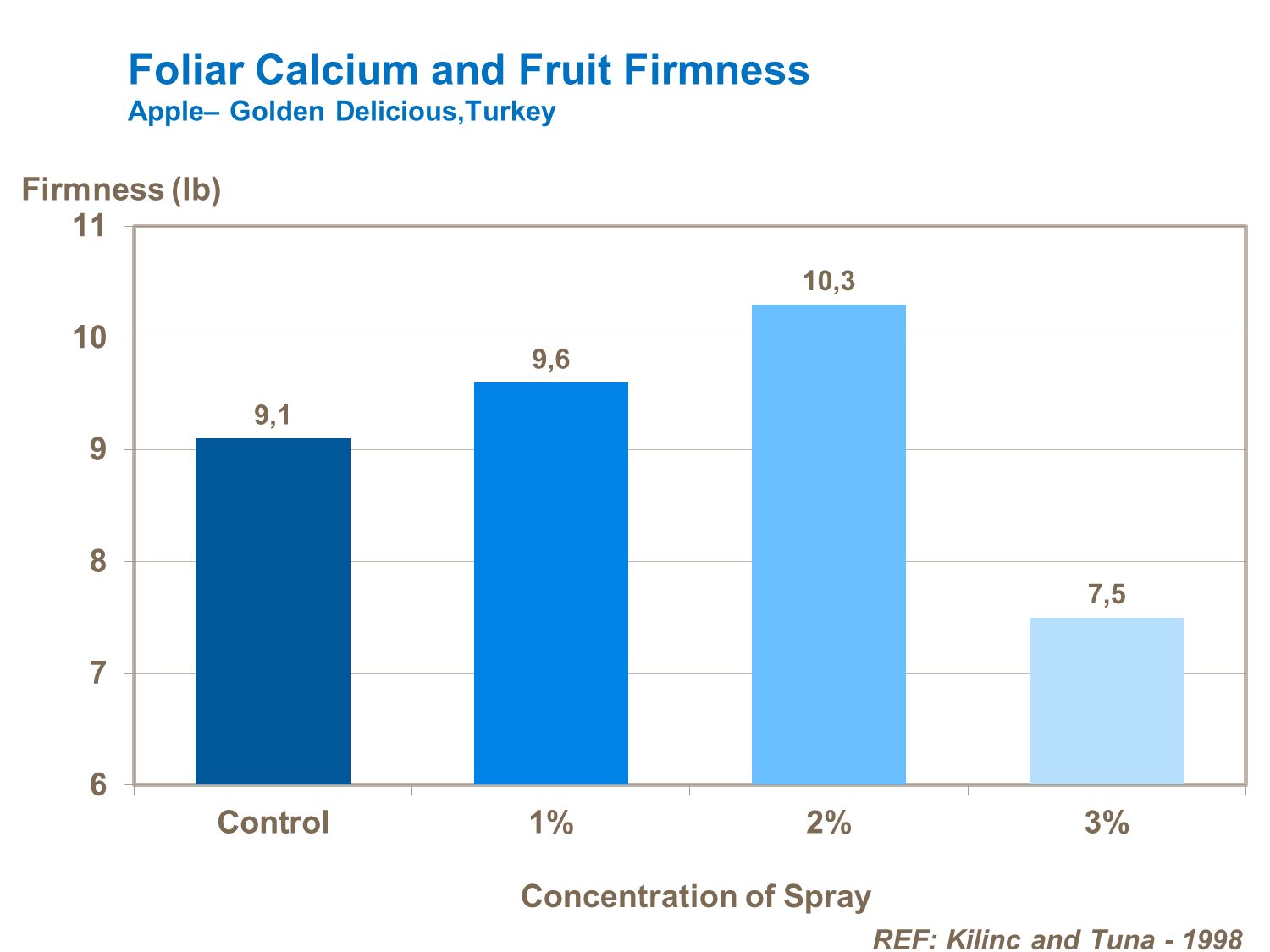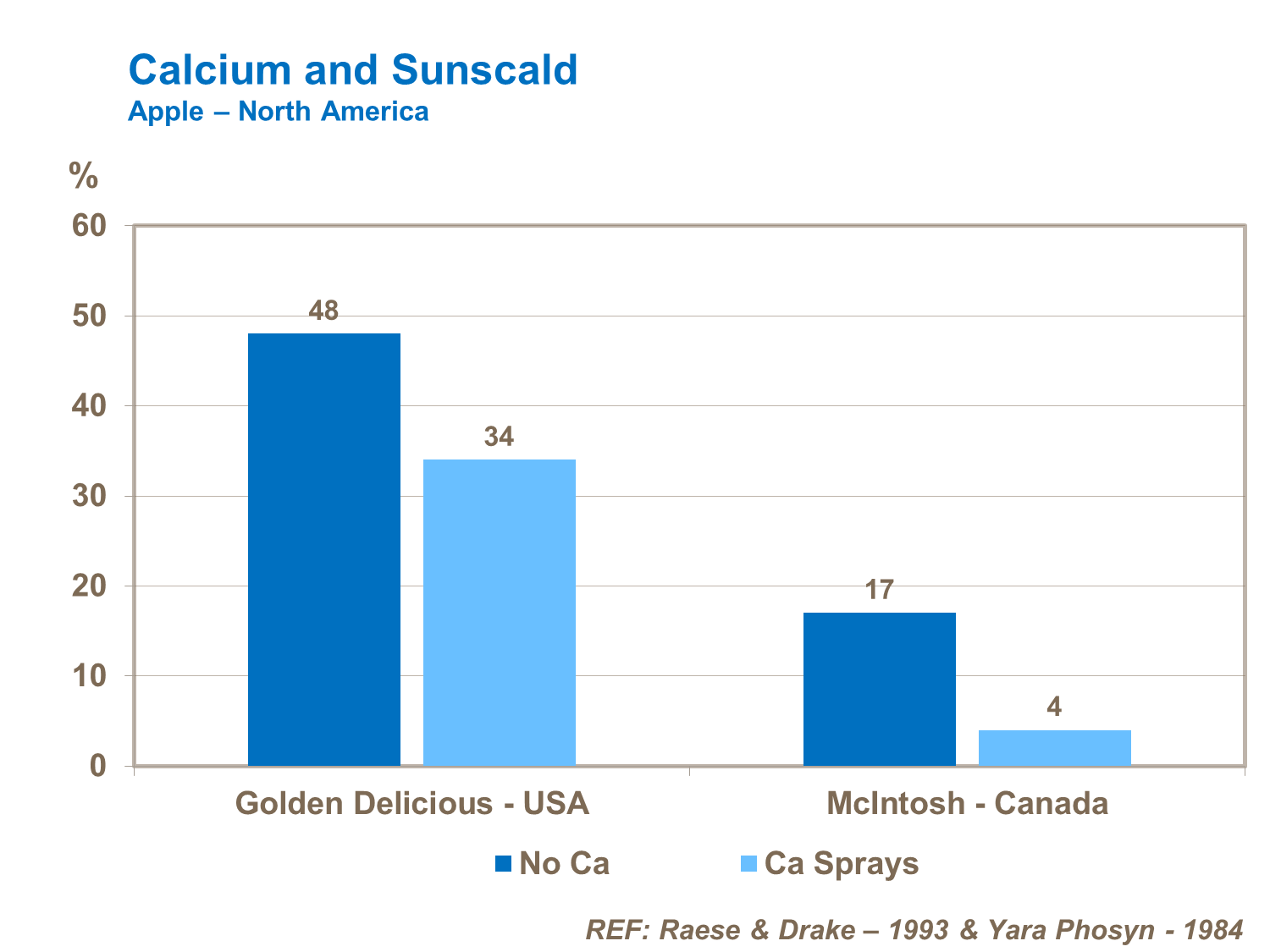Apples
Role of calcium in apple production
What is the role of calcium in apple production?
Calcium activates enzymes and is essential for cell division, elongation, and fruit growth. It stabilizes and ensures permeability of the cell wall, protecting it from degradation by enzymes.
As a result, fruits with high levels of calcium are firmer and the skin and flesh is less liable to breakdown disorders with reduced leakage through cell wall membranes. Thus, good calcium supply delays ripening and increases storability of fruits.
| Stage | Calcium effect |
| Bud Burst – Start of Flowering | Boost root and leaf growth and high yields |
| Fruit Set to Fruitlet at 30mm | Maintain good fruit quality and minimize fruit disorders |
| Fruit Fill – Maturity | Maintain good fruit firmness and storage quality |
| Post Harvest | Maintain high levels in the tree |
Calcium deficiencies in apples
Calcium is immobile in the phloem and can’t be remobilized from older tree tissues, so youngest leaves are the first to show symptoms, becoming chlorotic. New growth becomes stunted and fruit yield may be reduced.
Crop quality also deteriorates with reduced firmness and increased incidence of physiological disorders such as cork spot, sunscald and bitter pit.
Foilar calcium source
The type of calcium spray is important. Calcium chloride can result in leaf scorch, reducing tree health and productivity, as can be seen in canadian trials.
Calcium and yield
Soil application of calcium nitrate in the spring shows better results increases crop yield than ammonium nitrate, as you can see om the figure above (US trials with Golden Delicius apples).
Soil applied calcium and bitter pit
Lack of calcium nutrition increases the incidence of bitter pit and internal breakdown. Soil supply is important to keep fruit from these disorders. Studies with Golden Delicius apples in US show that calcium nitrate can reduce the incidence of bitter pit.
Calcium sprays and bitter pit
Soil supply of calcium should be backed by fruit applied sprays targeted to get more of the nutrient into the fruit. The greater the number of sprays the better the fruit quality and it is important to continue spraying right though to harvest, as shown in trials in Poland.
Calcium and fruit firmness
Soil applied calcium nitrate is effective in improving fruit firmness. When using foliar applications, the more sprays the better, provided that products such as calcium nitrate don’t deliver too much nitrogen, which can create nutrient imbalances and loss in quality. See figure above (studies in Spain).
Calcium and sunscald
Calcium also has an effect on sunscald damage, as studies in North America show. By improving calcium content in the skin and pulp, cells are less liable to damage and subsequent breakdown.
Foilar calcium source
The type of calcium spray is important. Calcium chloride can result in leaf scorch, reducing tree health and productivity, as can be seen in canadian trials.
